What are B2B Marketing vs B2C Marketing? Differences & Examples
As a business owner, your decisions affect the survival and growth of your business. As a marketer, you must select and identify your target audience to create successful marketing campaigns. There are currently two famous types of marketing based on two basic business forms of businesses: B2B and B2C. B2B and B2C marketing focus on attracting two different audiences. On one side, the customers are businesses, and on the other side, the customers are the consumer. There are differences in operation, purpose, and some other aspects between these two marketing methods.
In order to make a good choice that will help the business process of the company working smoothly, we need to understand the nature of all marketing methods. In this article, I will cover The basic differences between B2B and B2C marketing through the definition, audience, strategies, and marketing processes. Let’s discover!
Related articles
- What is Direct Response Marketing?
- Marketing Intermediaries: Definition, Types, Importance, and More
- 7 Things Every Marketing Report Should Include
- 13+ Best Elements, Types of Marketing Collateral
- Top 15 Shopify B2B Examples You Should Learn From
What are B2B and B2C?
1. B2B
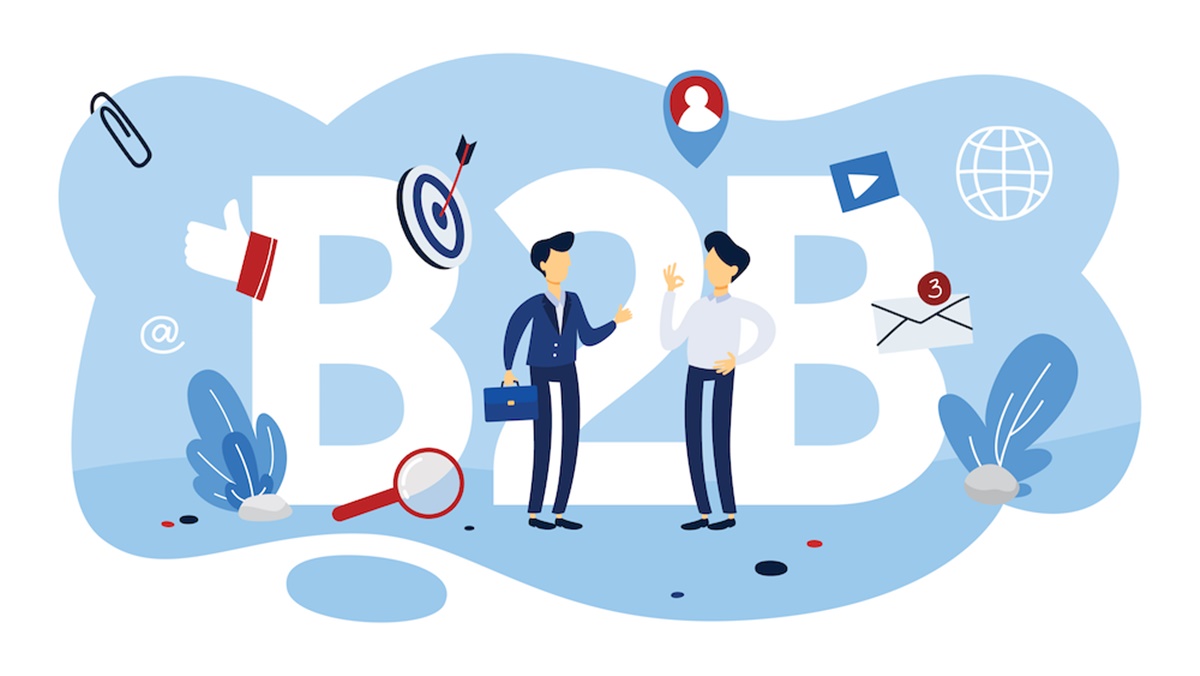
B2B stands for Business To Business, which refers to the form of business, business, or direct transaction between an enterprise and an enterprise. It includes e-commerce transactions and several other transactions in practice, from consulting, quotes to making contracts, buying and selling products. The B2B model is growing more and more when businesses have been using commercial websites as the main mode of communication. The proportion of websites targeted at organizations and businesses has been increasing.
A typical feature of the B2B model is that businesses always have a separate purchasing process that saves time and money, bringing more efficiency and cooperation opportunities between many different businesses. So when your customer is a business, you need to focus on the logic of the product instead of the emotional element by focusing on the product’s characteristics and functions.
Based on the type of operation and business nature, the B2B model is divided into four main categories:
-
B2B model is more of a seller: A company will own an e-commerce site and provide services, goods, and products to third parties such as retail businesses, manufacturers, or users. So this model offers products in medium to large quantities.
-
B2B model is more on the buyer’s side: Business units will play a major role in importing products and goods from the producer. Then other sellers will access the website to quote and distribute products.
-
Intermediate B2B model: This model will act as a bridge between buyers and sellers through an e-commerce exchange. Accordingly, if any business needs to sell, the form of joint operation will send products and services to this intermediary channel to promote and distribute. Organizations and individuals wishing to purchase will view and place orders under the protection of rights and comply with intermediary channels’ regulations.
2. B2C
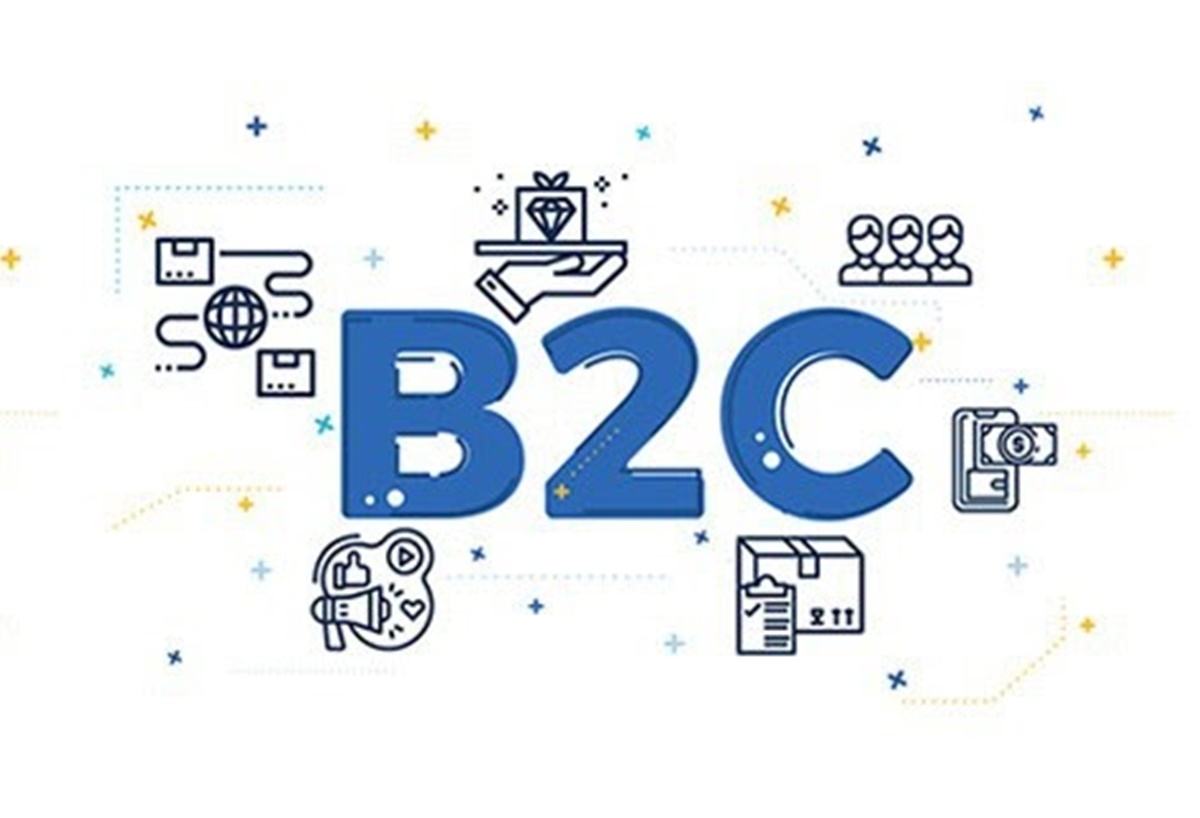
B2C is a term often used in business and marketing field. B2C stands for Business to Customer, which refers to businesses that sell products or provide services to end-users. Although consumer-driven businesses exist both online and offline, the acronym B2C is primarily used to describe companies that operate online e-commerce. B2C is one of the most popular and widely known sales models in the world.
Traditional B2C is but shopping at malls, dining at restaurants, paying for watching movies, etc. However, the rise of the Internet has created an entirely new B2C business channel in the form of e-commerce or selling goods and services over the Internet. Any business relying B2C sales must maintain a good relationship with their customers to ensure their customers will come back.
There are usually 5 types of online B2C business models that most companies use to target consumers.
-
Direct sellers: This is the most popular model in which people buy goods from online retailers. They may include manufacturers or small businesses, or simply online versions of department stores that come from different manufacturers.
-
Online intermediaries: These are people who do not own products or services, but rather act as buyers and sellers.
-
B2C based on advertising: This model uses free content, allowing visitors to visit a website. Put simply, a large amount of web traffic is used to sell advertising, sales of goods, and services.
-
B2C is community-based: Social networking platforms like Facebook, building an online community based on common interests, enable marketers and advertisers promote their products directly to consumers. Websites like these will target ads based on user demographics and geographic location.
-
B2C based on fee: Consumer-directed websites like Netflix charge for consumers to have access to their content. The site may also offer free, but limited content, and will charge for most content.
B2B marketing vs. B2C marketing: What are the differences?
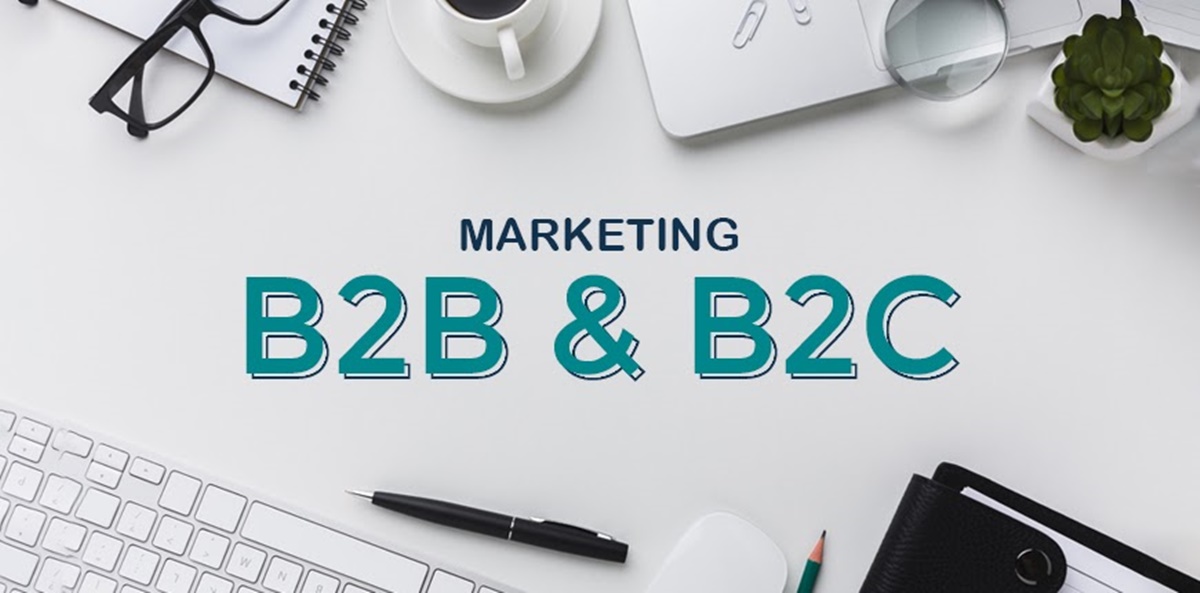
1. Decision-making process
In the B2B decision-making process, more open communication between businesses is an important factor in determining whether a decision is appropriate for both parties. In this communication process, B2B companies will often compare their companies’ positive aspects with competitors that can offer clear moves ahead of competitors.
On the other hand, in the decision-making process, B2B customers must evaluate their partner company or their own needs to determine if it is a beneficial investment. So as a B2B marketer, in addition to knowing your competitor, you have to understand your audience. This can help you visualize their possible decision-making process from which there are logical plans.
In contrast, the B2C decision-making process is where you can start using expertise to maximize your ROI. At the start of the conversion, B2C marketers must create influential advertising, providing consumers with information and product needs. Once consumers have identified their needs, they clearly understand the type of product they want to buy. Unlike B2B businesses, consumers are much more flexible when deciding which products to buy.
B2C marketers need to continue to attract consumers and do everything they can to know what customers are looking for by simplifying the decision-making process. You need to clearly identify the keywords that consumers will search for when searching for similar products and try to connect your product in the rankings for those keywords. The higher the ranking, the easier it is to bring customers back to your site and buy your product.
2. Customer relationships
B2B marketing is mostly focused on building personal relationships that promote long-term business. Therefore, building relationships in B2B marketing is very important because it allows you to demonstrate your business capabilities and your business philosophy. The more you have a relationship with your target audience, the stronger your brand will be built.
The first priority of B2B businesses is always to create potential customers. By developing meaningful and honest relationships, B2B companies will avoid poor assessments and gain useful, positive reviews. However, 72% of B2B buyers said that negative reviews provide product insight and insight. Therefore there is no denying it entirely but the impact of a negative review. When a website has only positive results, customers may consider those reviews to be fake and unreliable. By responding to all negative and positive reviews with a polite and polite attitude, you can tailor your business approach accordingly and let your reviewers think your company is good at meeting customers’ needs and opinions.
The main objective of B2C marketing is to encourage consumers to find and buy products on your company’s website and boost sales. To do this, customers need to have an almost perfect experience with your website. B2C businesses understand this, so they are not too focused on spending time getting to know customers. Their strategy is a marketing focused on selling products and providing high-quality products at the fastest possible speed.
Unlike B2B businesses that are often affected by customer reviews, B2C businesses only need to focus on factors related to product quality. A common tactic commonly adopted by B2C companies is via email marketing or remarketing. After the customer make a purchase, they will receive an email or popup asking them about the purchase experience. Every time customers respond, they will receive a 20% discount for the next purchase! In this way, businesses can increase the user experience in the future.
3. Branding
In B2B marketing, branding comes primarily through relationship building. B2B marketing branding is based on consistency in the presentation and distribution of products or services. If you can position your brand in the market and create a unique footprint, you can help promote brand recognition and generate potential customers.
Going back to developing relationships, B2B marketers must have insight into the characteristics of the market, from which they can adjust their brand according to their target audience. This will help promote brand awareness and enhance the leading position of the business.
For B2C marketing, branding is considered a top priority. A strong brand allows a marketer to accurately convey the message to customers, thereby building customer loyalty towards the brand. Building a reputable brand, connecting emotions with customers will help motivate buyers to buy. Because the relationship between the customer and the company is mostly a transactional relationship, so for customers to remember the brand in the long run, companies must focus on the customer buying experience to ensure said they would come back. Companies must deliver trustworthy messages for customers to trust and choose the company’s products to achieve this.
4. Acquiring customers
B2B businesses often work in a specific business environment, so they are forced to understand their target audience as demographics. For B2B businesses to attract customers effectively, companies need to collect and analyze data correctly.
To collect data, there can be many forms, both qualitative and quantitative. Currently, the most simple and accurate way to collect data is through Google Analytics and keyword research. By searching for search engines and researching the keywords that users often use, you can find out the most commonly used search types. Combining your conclusions after SERP analysis with keyword analysis and demographic data analysis of Google Analytics, you will identify your target audience. From there can build a specific advertising strategy towards potential customers.
One of the main goals of B2B marketers is to generate leads. Therefore, companies often prioritize building a top list of potential customers, finding the right marketing channel, and implementing highly integrated marketing.
Unlike B2B businesses, B2C businesses will often operate in a larger scale market, and the goal is much larger. B2C marketers will seek and consider a lot about tracking and managing marketing channels when they get customers.
Starting from the beginning of these channels, they can create an extensive advertising network and attract top leads that fit their standards. By analyzing top leads’ demographics, companies can create a list of leads and retarget those people to turn potential customers into customers.
Another important strategy to attract customers in B2C is the implementation of highly effective CRO tactics. Ads with engaging content, quality landing pages, and easy to navigate and deploy simple but effective conversion channels can have a major impact on the business results of B2C businesses.
5. Content and Ads copy
B2B businesses tend to want to buy services or products from an expert in terminology and process. So, to reach the target audience, let them understand how you understand the product.
B2B marketers will focus on developing Ads copy so that it can build trust for customers. In B2B businesses, the director or manager is responsible for making purchasing decisions, so they need to remove emotions from the decision and think about the positive and negative effects of the purchase.
Unlike B2B businesses, B2C businesses must use trusted content to entice customers to click on ads. By using a simple, understandable language, B2C marketers will create closeness to customers. Ads for B2C often aim to evoke emotions in consumers.
6. Tactics to reach the audience
B2C marketing aims to convert people who visit your store or website into active, consistent buyers. B2C companies make more use of sales incentive activities such as coupons, displays, stores, and offers to gain a target market.
B2B Marketing aims to convert potential customers into customers, but this process is longer and more complicated with B2C. A B2B company needs to focus on building relationships and promoting using marketing activities that create leads maintained in the sales cycle.
10 examples of successful B2B vs. B2C marketing
Here are some examples of successful companies in both B2B Marketing and B2C Marketing. This can be considered as the typical examples of these two common marketing methods.
B2B Marketing Examples
1. MYOB: Tax Time
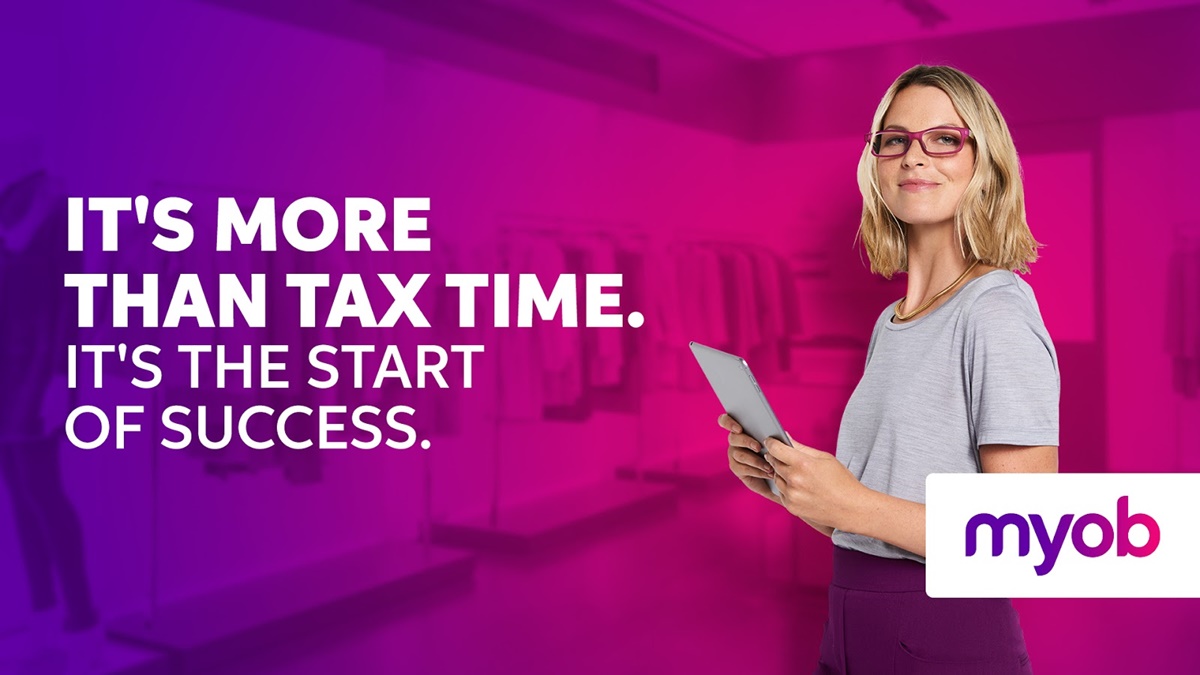
MYOB is a company specializing in providing business management solutions in Australia and New Zealand. MYOB supports companies in managing their finance by connecting them with accountants and financial service professionals. So, their customers include two main types: Small businesses who are starting businesses and companies who are having difficulties in managing financial matters.
Each customer will have their own needs, and MYOB has developed a B2B content marketing strategy for each audience that shows their level of understanding of their customers.
MYOB recognizes that many businesses are looking to grow their businesses based on accounting and finance. Therefore, they created promotional content that shows that MYOB is a powerful resource to help businesses navigate each stage of their development. The idea of The Tax Time center was created to suit the needs of both groups of customers and provide beginners advice and guidance to overcome new stages of development.
The lesson is that you should carefully understand your target audience, understand what customers are looking for. From there, give out specific and appropriate marketing strategies.
2. Deloitte Insights
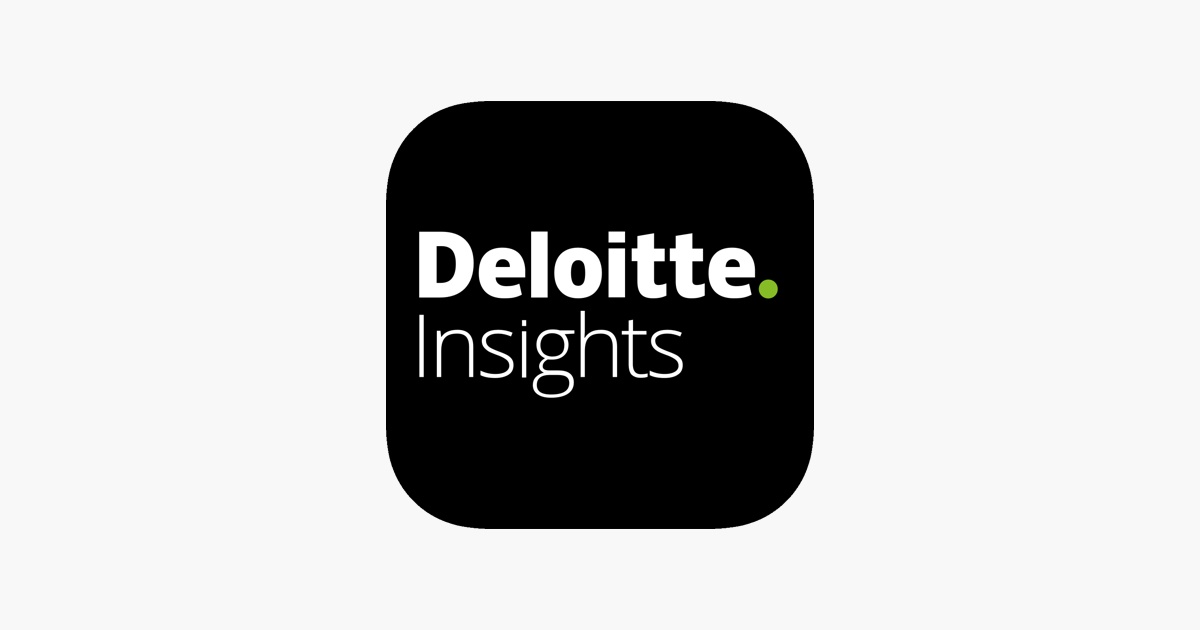
Deloitte is a large company specializing in consulting, technology, auditing, etc. Their customers are government agencies that go to private companies - and their vast knowledge base is a major selling point. So Deloitte clearly defined the core of their marketing strategy to create useful, informative content for specific personal audiences.
However, they also understand that creating a content strategy to please such a wide range of customers is a challenge. It may not focus on their potential customers. So they set up large-scale information centers, called Deloitte Insights, to provide the resources they know to specific customers.
3. NextView Ventures: Better Everyday
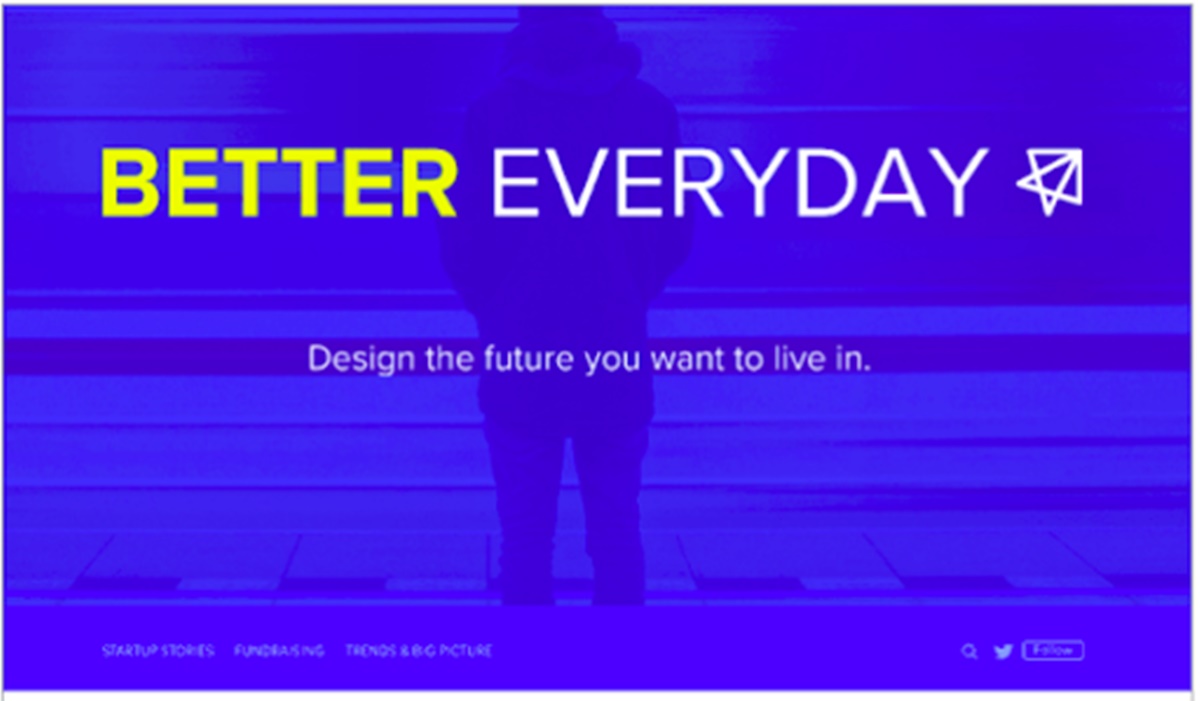
NextView Ventures is a B2B company with a great presence on Medium, typically with their Better Everyday campaign. This is an e-book that specializes in stories, analytics, and sources to assist seed-level designers in redesigning every day.
But why does NextView need to create a completely separate blog on their own site? When correctly making content off the main topic on the site, it can give publishers a huge improvement in discoverability, variety, and quality, especially when Using a completely famous platform like Medium. Because Better Everyday is not attached to the company URL, it gives NextView the opportunity to test special sounds, voices, and stories from many experts.
So leveraging the delivery of off-site content platforms can be an exciting way to get customers’ attention. External content materials diversify your target market by attracting readers who are likely not to find your site.
4. Wistia: Instagram

Wistia, a video website hosting platform, has used social media channels to show the audience an inside look of people who create great products and services that they love. By sharing visual content on Instagram, lifting the curtain on you and the dog. After all, this organization has provided generations of groups who want web hosting solutions for their visual content. Among its other advantages, visible content material can help motivate viewers to retain things like logo information.
Please do not forget to include images in your content strategy. Of course, being present on visual focus channels like Instagram and YouTube is important - but using images properly also helps you create a huge effect. Wistia has created a generation of visual content materials - so it gives customers the feeling that it will have content displayed correctly. Identify what your business does particularly well, then make the most of the channel that fits your strengths.
5. CB Insights: Newsletter

CB Insights had a successful marketing campaign when they submitted newsletters that shared some insights on technology, capital challenges (VC), and growing businesses. There are also some newsletters with funny snapshots related to or the subject of the newsletter.
CB Insights designs technology for everyone in the VC space, so it is responsible for developing content to appeal to a wide range of audiences: customers, potential customers, technology enthusiasts, and investors. Use smart situational traces or even write every email with a humorous voice over it. In the entertaining content, mix the useful information that readers have registered to attract customers’ attention.
B2C Marketing Examples
1. Chobani

Do not think that only companies with a rich product portfolio can create beautiful visual marketing. Companies that specialize in one item can do that too.
With fresh and colorful photos of kale Caesar salad, pizza bread mushrooms, and peach cheesecake, Chobani is a great example for a brand that leverages diverse photography to highlight a product.
Once you’ve identified an intuitive strategy for social media, especially Instagram, start by thinking further about how product images reach customers and how they are used.
2. Starbucks

Starbucks is a leader in using social media to market and attract customers. Experts always appreciate the multi-channel marketing of this famous coffee chain.
Starbucks creates user-friendly experiences through a multitude of special features on its Facebook and Instagram pages, including special contests, store locator, international links, and recruitment announcements.
To simplify the purchasing process, Starbucks has created an application so users can pay on mobile and skip unnecessary steps. Although all companies should aspire to create their own native app, Starbucks suggests that brands should leverage existing social networks to simplify the buyer’s journey with each interaction.
3. Spotify
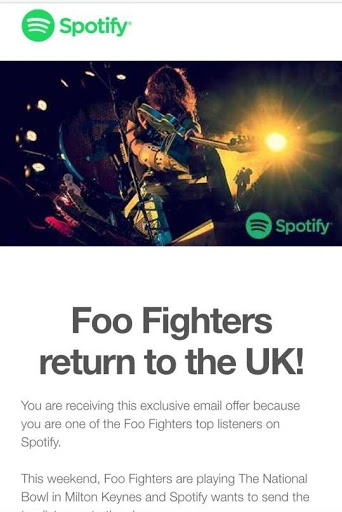
Personalization is the core of Spotify’s marketing campaign. By taking advantage of information about users’ music preferences, Spotify only sends emails that contain relevant and useful content to users such as announcements about their favorite bands releasing new albums or news about the local concert.
However, the online music platform shows us another aspect of personalization in marketing campaigns. Spotify currently possess Discover Weekly, a custom playlist filled with songs that an individual user has yet to discover. At the end of the year, Spotify gave each user a microsite “Year in Music” that tells the story of their annual music habits.
When you consider how to connect customers to your marketing campaigns, go beyond personal notification emails to impress your customers.
4. EDEKA

EDEKA is a prime example of advertising that is not necessarily advertising. During EDEKA’s holiday advertising campaign in 2015, the German supermarket created a video telling the story of a grandfather who is willing to do anything so that busy descendants can go home for the holidays. If you’re looking to exploit video marketing, pay attention to empathy and character development to convert this ad into shareable content.
Remember, you don’t need to make your audience cry. But you need to create a connection among people through your storytelling.
5. Purina

If you have decided on your campaign idea, try to implement it on all the formats that your content can exhibit. Purina is a typical example of this. Pet food company - Purina has partnered with BuzzFeed to create a lovely video sharing the first day of the meeting between a man and his new puppy. They went on to execute the sequels telling this interesting story, including “Our first Poop” and “We met a girl.” This advertising campaign is then wrapped in a microsite to teach people who want to adopt a puppy.
Don’t limit your campaign’s scope and experiment with new media and storytelling that you can reap the surprising results.
Further readings
- What is Marketing Audit? Benefits & How to do?
- What is Green Marketing? Pattern, Benefits & Examples
- The importance of Digital Marketing Analytics to Business!
Final words
Understanding issues in B2B marketing and B2C marketing helps marketers make better decisions. Nowadays, It is the fact that in the same company, there can be a mix of B2B and B2C marketing. For example, an enterprise design business office (B2B service) can also design certain rooms for individual customers in need (B2C service). A business that sells toothpaste and mouthwash to consumers (B2B service) can also sell these items to dental offices. At that time, the boundary between B2B and B2C was not really clear; a good marketer always directed to a single goal of P2P - person to person - despite the difference in external methods.
Hopefully, the article above has provided you with useful knowledge about B2B and B2C marketing as well as the differences between these two forms of marketing.
New Posts






